Many people think that garden activities end after summer. But that’s not true because there are many fall edible plants that you can grow in your garden. Plenty of vegetables can be planted in the cooler fall temperatures, allowing you to harvest fresh vegetables during winter.
Planting in autumn has many benefits. The soil is still warm, there are fewer pests than in the summer, and you can get an early spring crop. Plus, there is usually more rain, so you won’t need to water as much.
Below are the 17 best edible plants to grow in the fall. Be sure to check guides for your local area to find the best planting times, as they can vary greatly from north to south.
- Related article: Wild Plants You Can Eat
7 Key Takeaways on Fall Edible Plants
- Fall is a great time to grow edible plants because the soil is still warm, there are fewer pests, and there’s typically more rainfall, reducing the need for watering.
- The best plants for fall gardening mature quickly and are tolerant to cold temperatures and frosts, including greens, perennials, shrubs, and spring bulbs.
- Reference local guides for exact planting times before planting, as they vary greatly depending on your location.
- Vegetables like kale, spinach, and Swiss chard are excellent choices for fall planting because they grow quickly and are cold-resistant.
- Root vegetables such as radishes and carrots thrive in cooler weather and develop sweeter flavors after a few frosts.
- Herbs like sage and mint are easy to grow in the fall and can provide fresh flavors for cooking year-round.
- Consider planting specialty crops like saffron and sassafras for unique flavors and culinary experiences.
What Are the Best Edible Plants to Grow in the Fall?
The best and most common plants to grow in the fall are the ones that mature quickly and are tolerant to cold temperatures and frosts. The species may vary based on the climate, but generally, it’s a great time to plant greens, perennials, shrubs, and spring bulbs. Let’s explore the best fall edible plants for your yard.
1. Kale (Brassica oleracea var. sabellica)
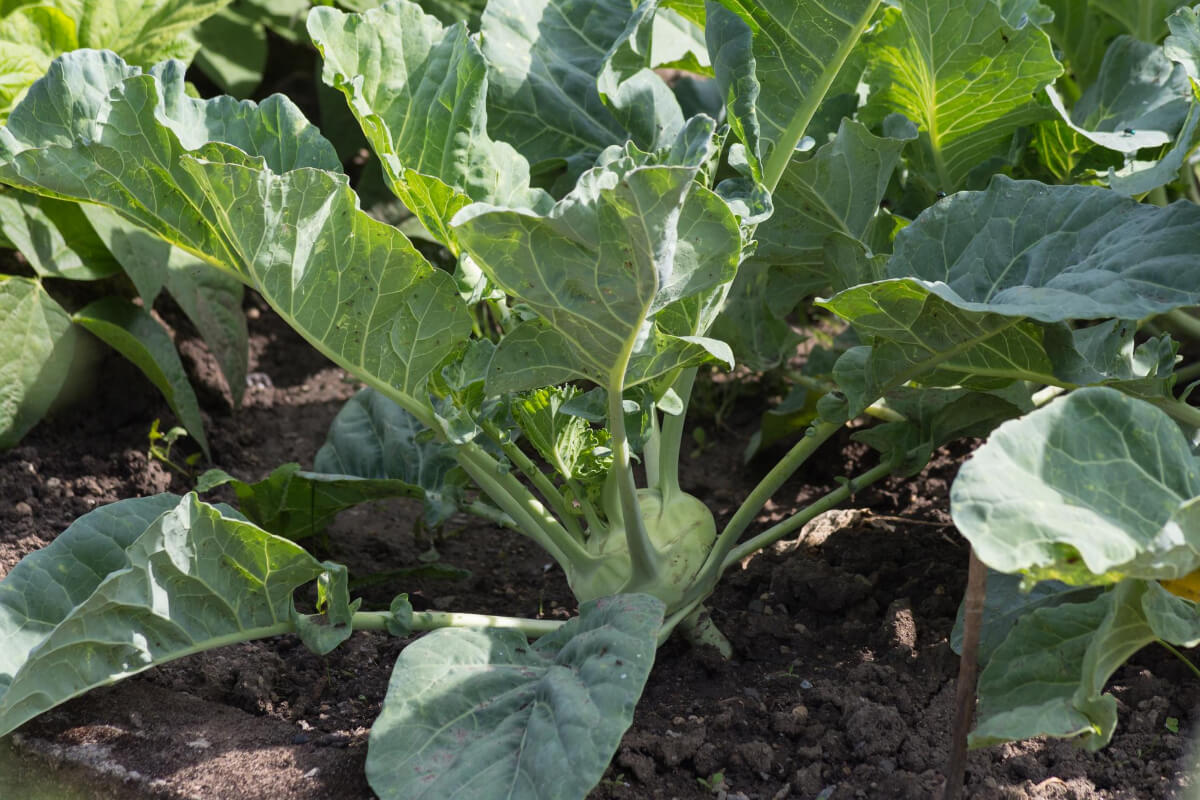
Kale can be planted in late summer in most parts of the country. You can keep planting it throughout the fall in the southern parts of the U.S. Depending on the variety, you might even be able to harvest it in the fall.
Kale is very resistant to cold, so you can leave it in your garden during the winter. It will start growing new leaves at the first signs of spring. This cold-hearty plant needs full sun to thrive but can tolerate partial shade. Enrich the soil with compost and apply mulch around the plants to help Kale thrive.
Kale is best eaten raw to absorb its many beneficial nutrients fully. It is especially rich in folate, manganese, and vitamins A, C, and B6. Consider plucking some crisp kale and making fruit smoothies if you don’t enjoy it as a salad.
2. White Cabbage (Brassica oleracea var. capitata f. alba)
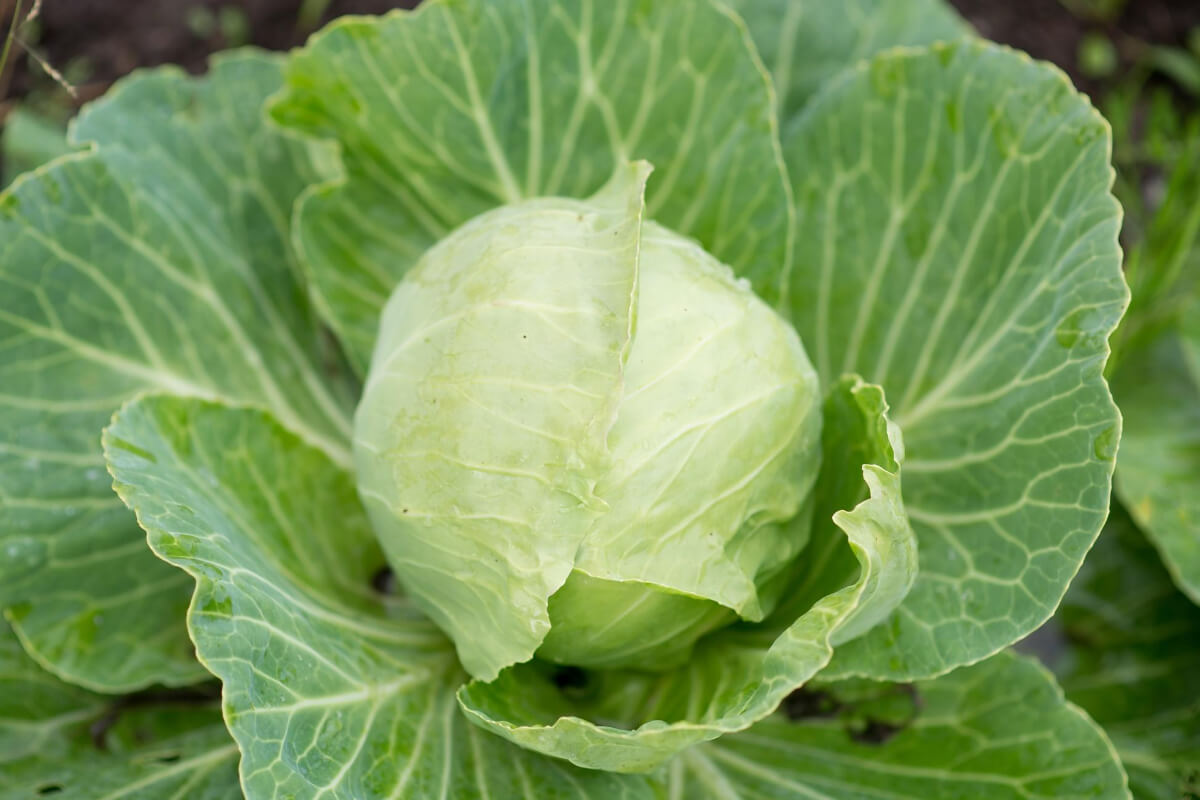
White cabbage, also sometimes called Dutch cabbage, is the same species as broccoli and kale but in a different variety. But don’t be fooled by the name. This cabbage is white inside, while the outer leaves are light green.
White cabbage can be planted in the fall directly outside as it thrives in cooler weather with plenty of rainfall. It grows best with a steady water supply and nutrients, so dig plenty of compost before planting.
It should be harvested before the head starts to open. It can be eaten raw or finely sliced. It tastes pleasantly sweet and crunchy, with a hint of spice. White cabbage is one of the healthiest vegetables in its family, as it’s an extremely good source of vitamins C and K.
3. Chicory (Cichorium intybus)
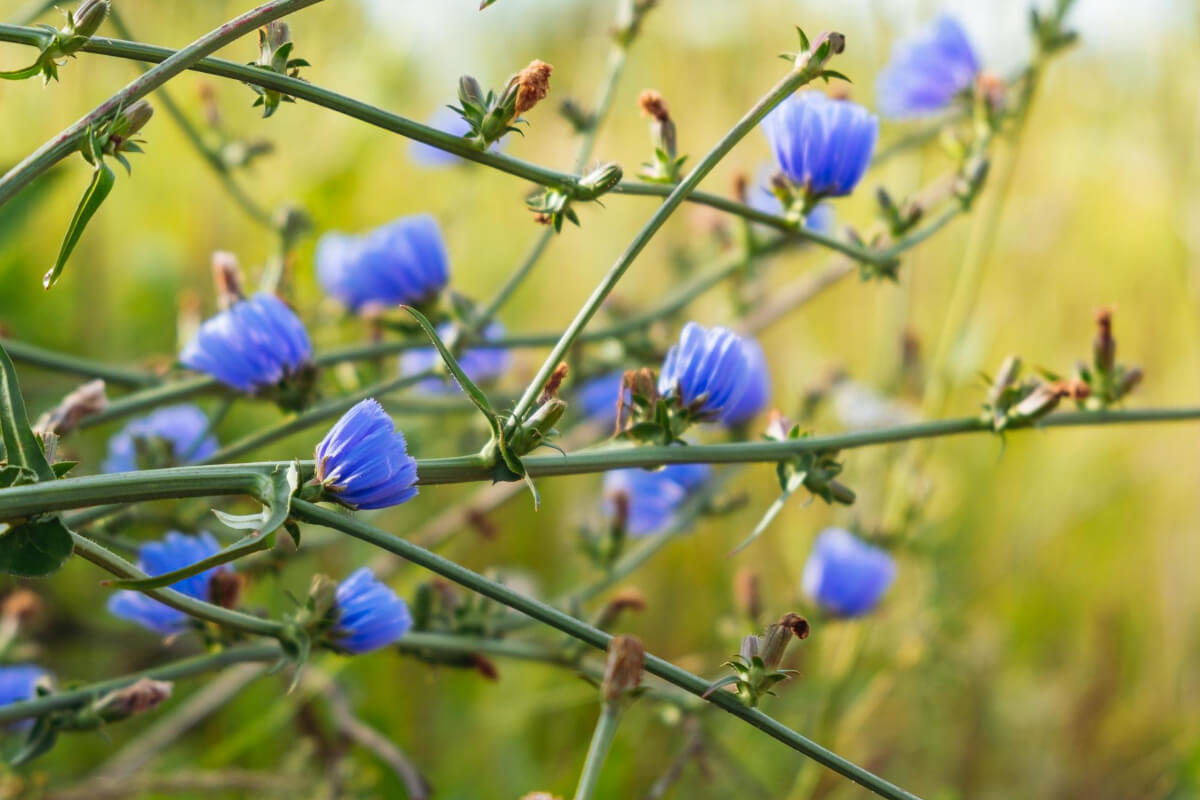
There are innumerable varieties of chicory, adapted to be planted throughout the year. They tolerate various climates and conditions, so you can be sure there is at least one you can plant wherever you are. The only aspect to be careful about is soil drainage, which doesn’t survive with stagnant water.
Chicory can be cut just above ground multiple times, forming new leaves. The process varies depending on the kind of chicory, but basically, the leaves need to be kept in a dark place for a while, sometimes under a layer of soil or straw.
Cultivated chicory belongs to the same species as wild chicory. They are rich in vitamins A, B, C, K, and manganese. The cultivated one has larger, sweeter leaves that can be eaten raw in salads. The more bitter varieties can be blanched to obtain tender white leaves that taste sweeter.
4. Corn Salad (Valeriana locusta)
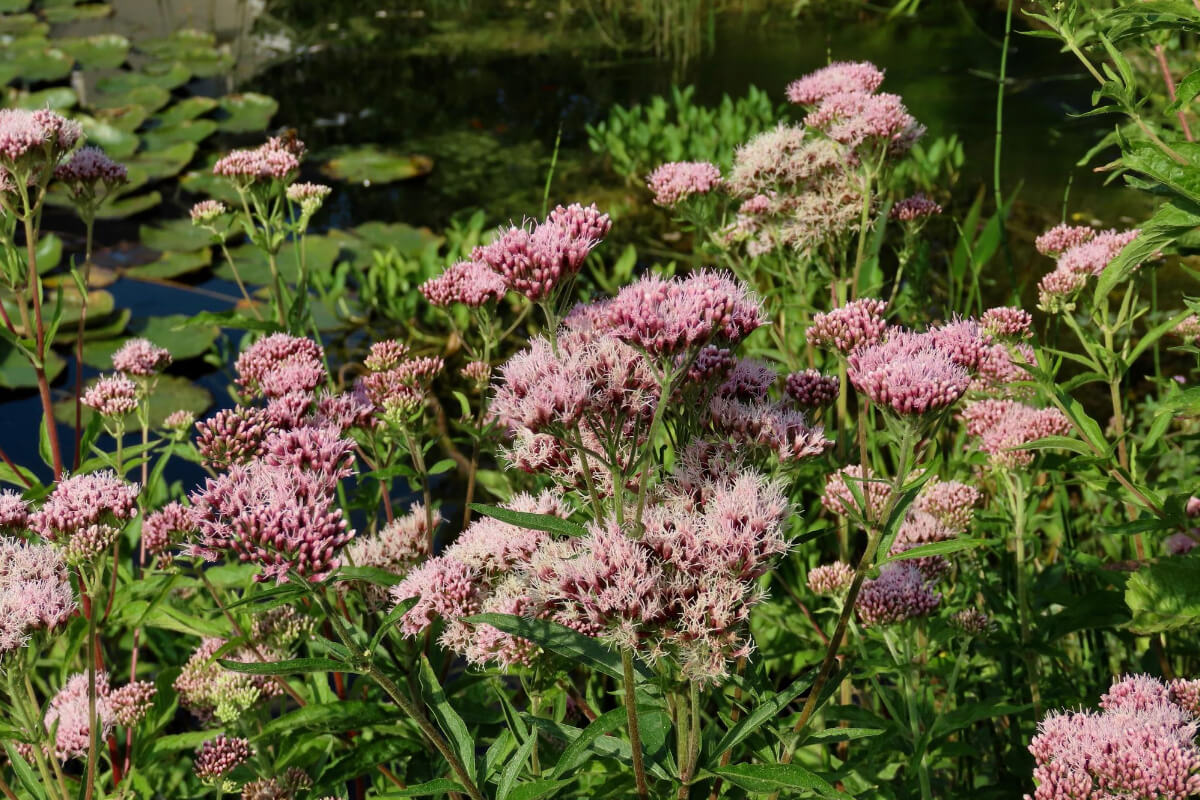
Corn salad produces small rosettes adapted to resist cold weather. It can be cultivated in winter and provides a simple shelter.
For corn salad to thrive, it’s best to disturb the soil as little as possible to maintain its quality. Corn salad prefers humid, clay-rich soils. If you live in an area with winter frosts, protect the soil by mulching with straw or other materials.
Remove the entire plant once it’s big enough when harvesting corn salads. Pick the amount you consume in a day or two, as it tends to wither quickly. Corn salad greens are great in salads. They have a hint of nutty flavor and a soft texture.
5. Spinach (Spinacia oleracea)
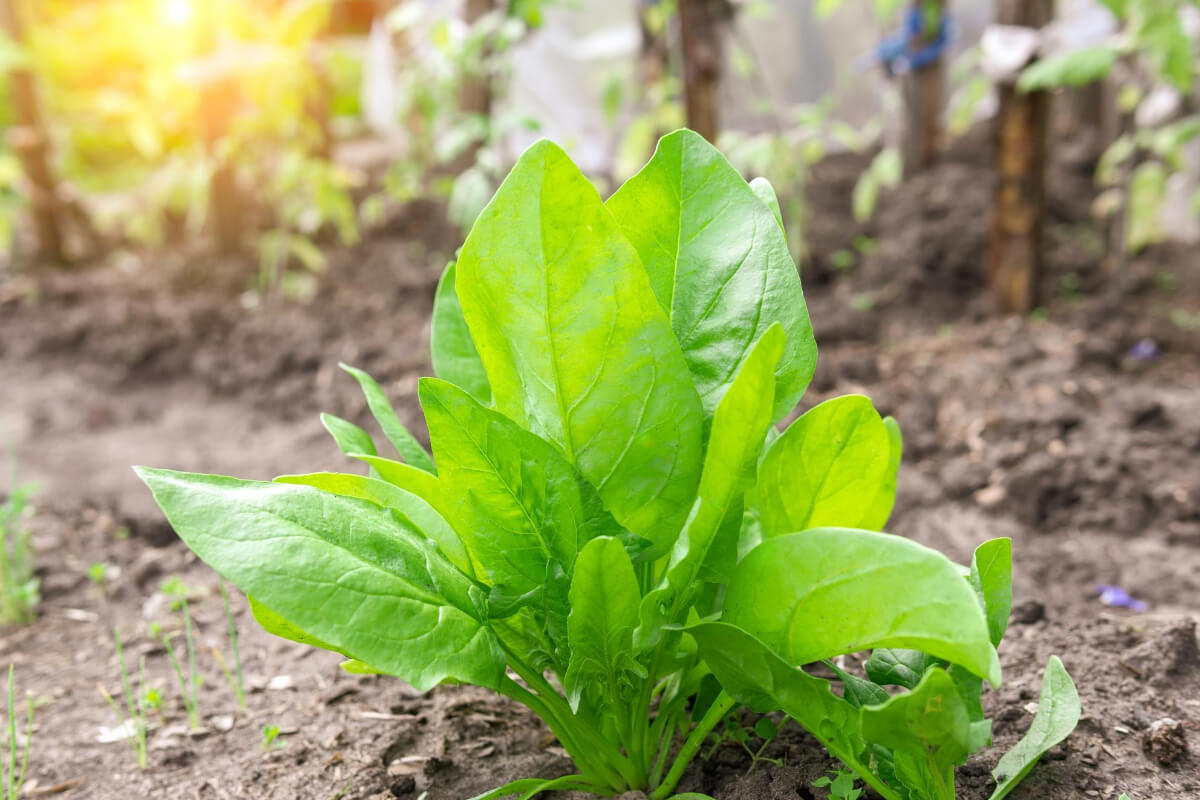
Spinach thrives in cool weather, as it doesn’t tolerate heat, droughts, or too much sunlight. Choose a variety that can be planted in the fall, as others should be grown in the spring.
Spinach thrives in soil that is rich in organic matter and well-drained. It is ready to be harvested about 12 weeks after planting. You can either harvest the whole plant or regularly cut the outer leaves.
Spinach can be used in a wide variety of recipes, not only as a side dish. Try it in savory pies, gnocchi, omelets, and as pizza toppings. The younger leaves are very tender and perfect as a salad. Spinach is a good source of essential vitamins A, C, and K, and of the minerals iron, magnesium, and manganese.
6. Potato (Solanum tuberosum)
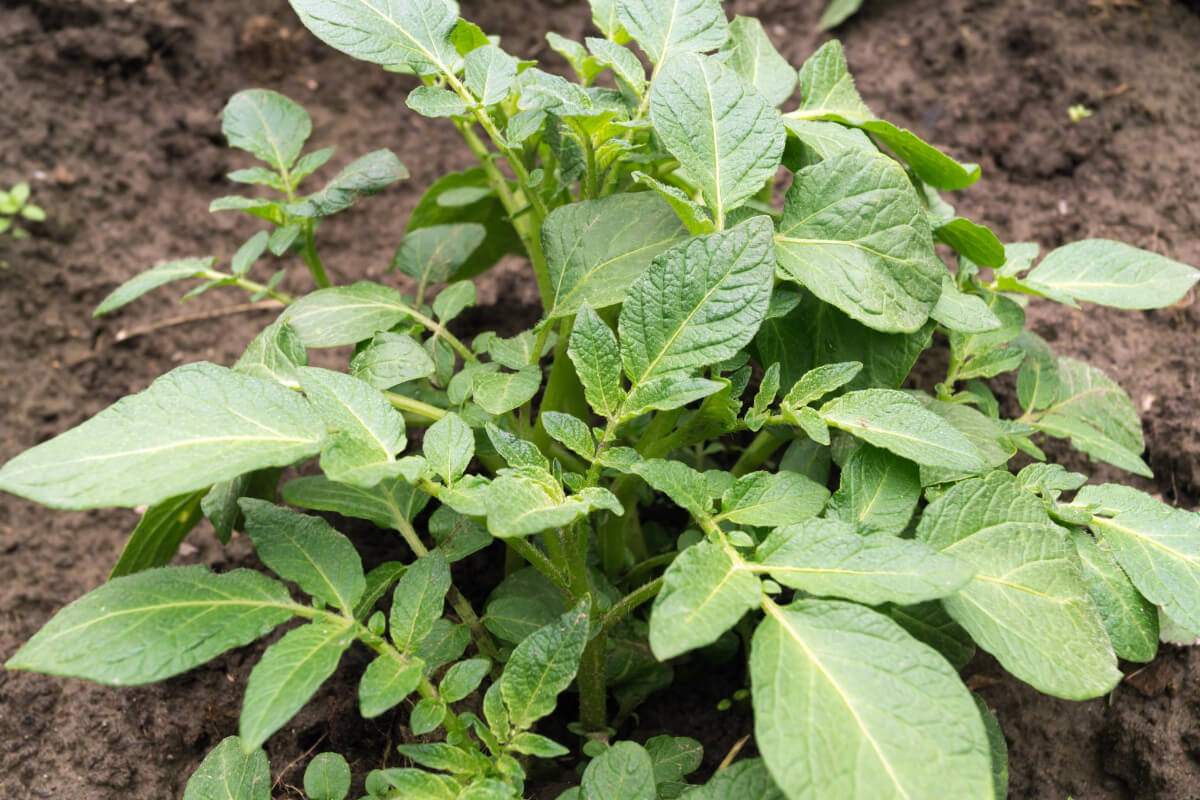
Potatoes are very adaptable. Depending on your area’s climate, they can be planted almost yearly. However, they perform best in temperate climates. Winter frosts could damage the leaves and slow the growth of the tubers.
Potatoes need rich soils with plenty of potassium and phosphorus to thrive. They also need soft soils that don’t offer resistance to underground growth.
Some people use the normal potatoes you buy at the grocery store, and they will grow. Still, it’s best to purchase ones grown especially for planting because they are resistant to viruses.
Potatoes are ready to be harvested when the leaves start drying. These tubers are rich in starch and contain good vitamins C and B6. They have been a staple food for many populations.
7. Garlic (Allium sativum)
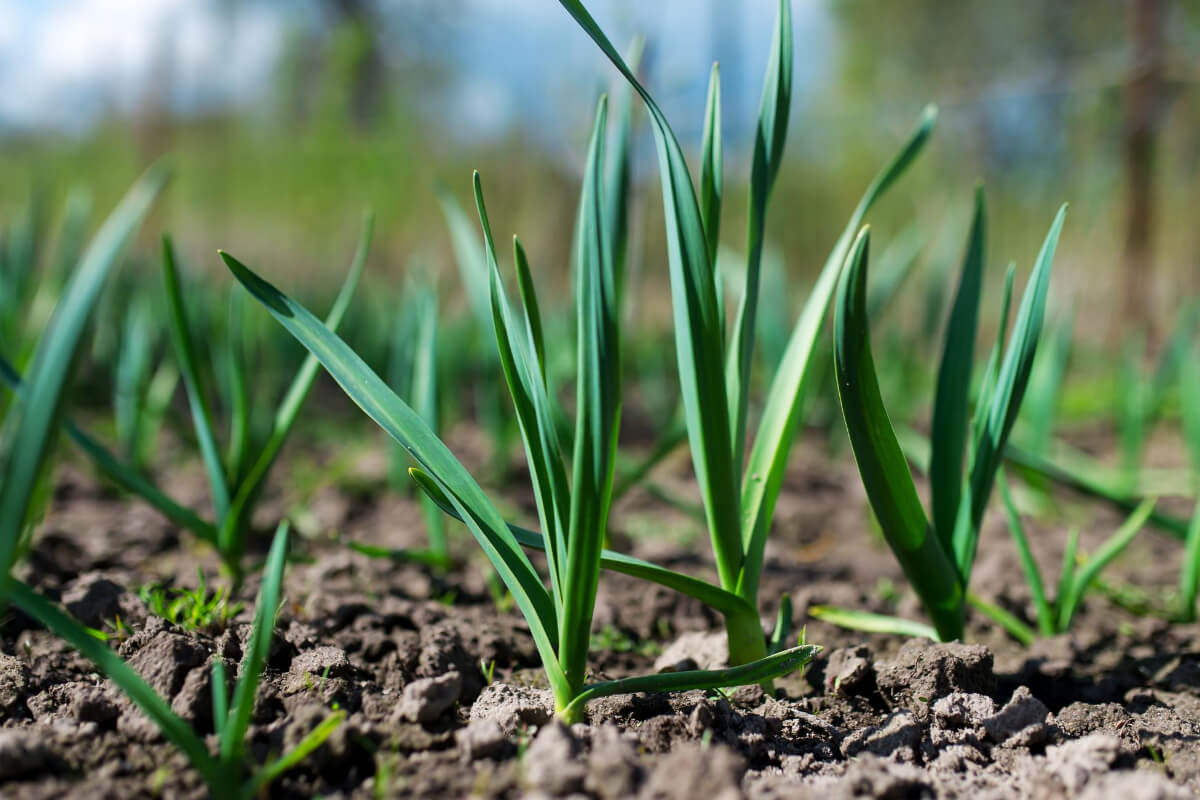
Garlic, a member of the Allium genus, is one of the easiest plants to grow. It thrives in dry, temperate climates with plenty of sunlight. Avoid very moist soils, as this can cause the bulbs to rot. Also, avoid fresh manure.
Garlic can be planted from October to November in southern areas. In colder climates, it should be planted in the winter. Garlic can be stored for months after harvesting in early summer.
The bulbs and leaves are edible. Many varieties of garlic can be found in the wild, which are also edible. These usually have smaller bulbs and a milder flavor. Garlic is reputed to be a traditional remedy for many illnesses, but its properties haven’t been scientifically proven.
8. Radish (Raphanus raphanistrum subsp. sativus)
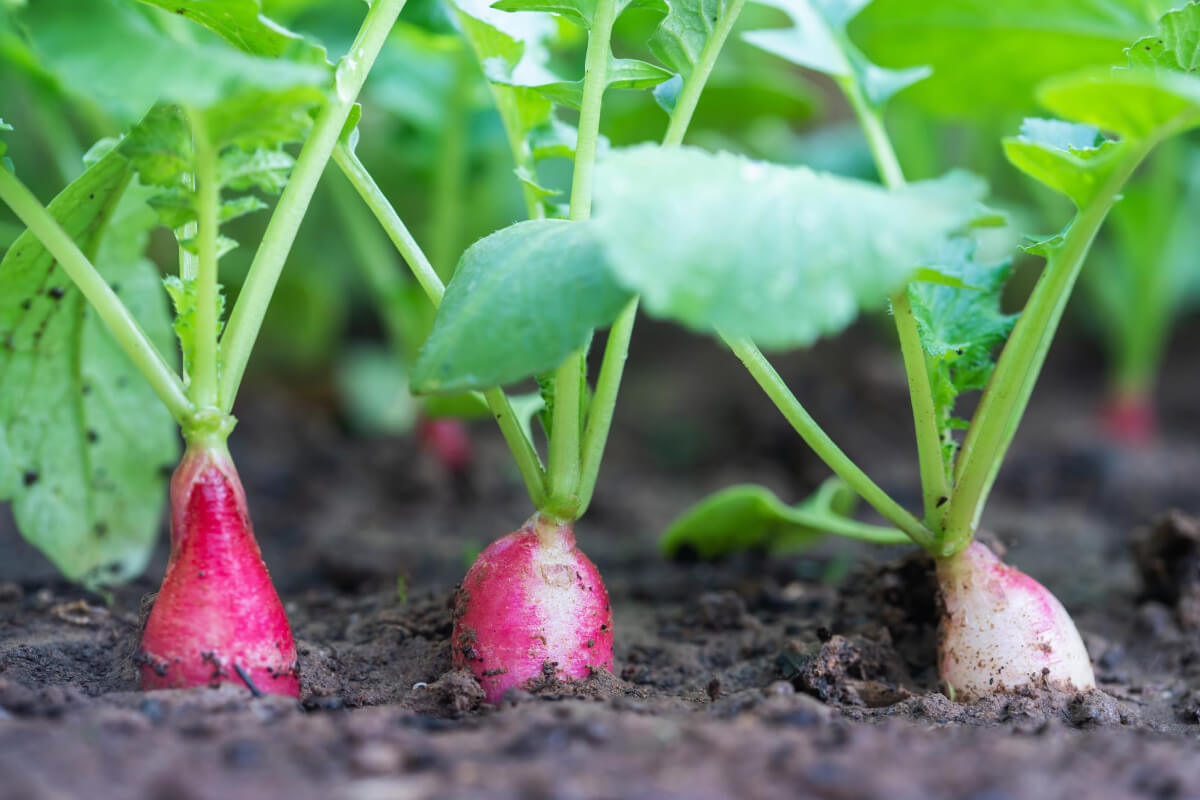
Radishes are from the cabbage family and are some of the easiest vegetables to grow. They can be planted in early fall and ready to be eaten a few weeks later. They grow well in cooler areas with plenty of sun.
There are many varieties of radishes with different root shapes, colors, and maturity times. Some kinds should be planted in spring, so be careful which one you buy.
When picked at the right time, radishes are crunchy and tasty. Avoid waiting too long, or the root could break. They are mostly eaten raw and finely sliced, but the tougher ones can be boiled or steamed. Radishes are great in hypocaloric diets, as they are 95% water.
9. Sage (Salvia officinalis)
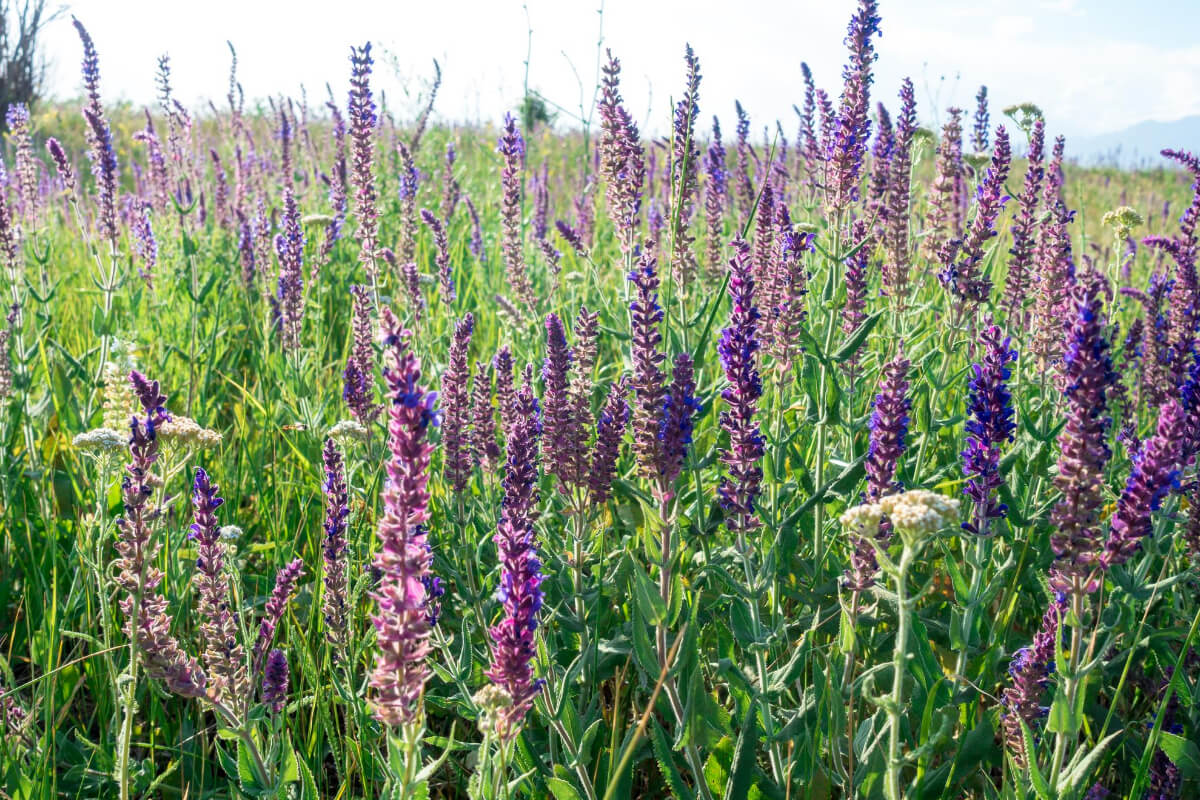
Sage is a perennial herb that can be planted year-round, but the best time is the fall. This plant is native to warmer climates but adapts well to cool weather. In the most rigid climates, it’s best to move it indoors during the winter, as repeated frosts could damage it due to the cool temperatures.
Sage is very hardy and doesn’t require much care or water. To harvest, you can pick a few leaves from the top of the branches as needed. You can also cut larger amounts in the spring to dry and store for later use.
Sage is an essential herb traditionally used in many Italian and Middle Eastern dishes. It releases the most flavor when fried in butter and paired with gnocchi or fresh pasta.
10. Mint (Mentha Species)
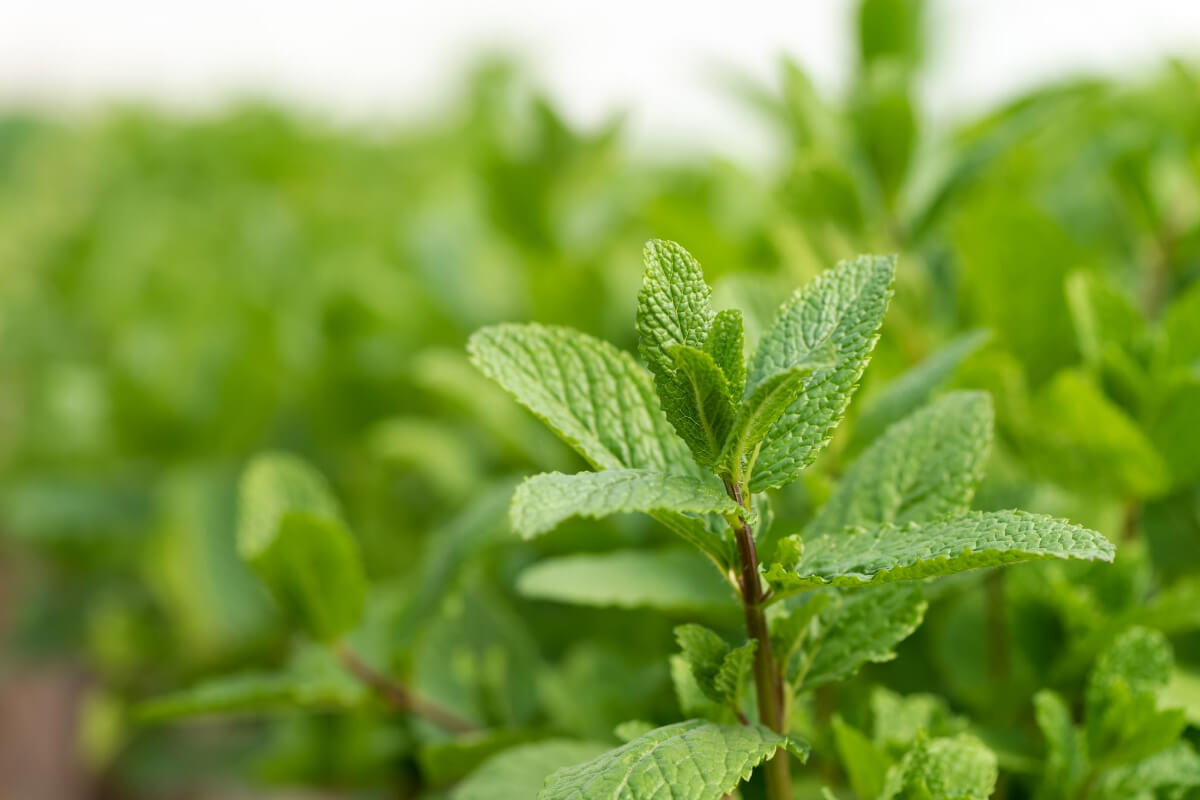
Mint is very hardy and can be planted almost all year long. It can be either part of your garden plants or kept in vases. This last solution might be best, as mint is known to spread very quickly.
Mint could easily overtake your garden greens if not carefully controlled. Despite this risk, many people grow it next to their vegetables, as its essence keeps away many parasites.
Mint thrives in warm temperate climates on dry soil, where it becomes the most aromatic. Mint leaves can be picked during the warm season. The best time to collect large amounts to dry is June. They have a warm and fresh flavor and can be used in teas, cold drinks, candies, and Indian curries.
11. Common Marigold (Calendula officinalis)
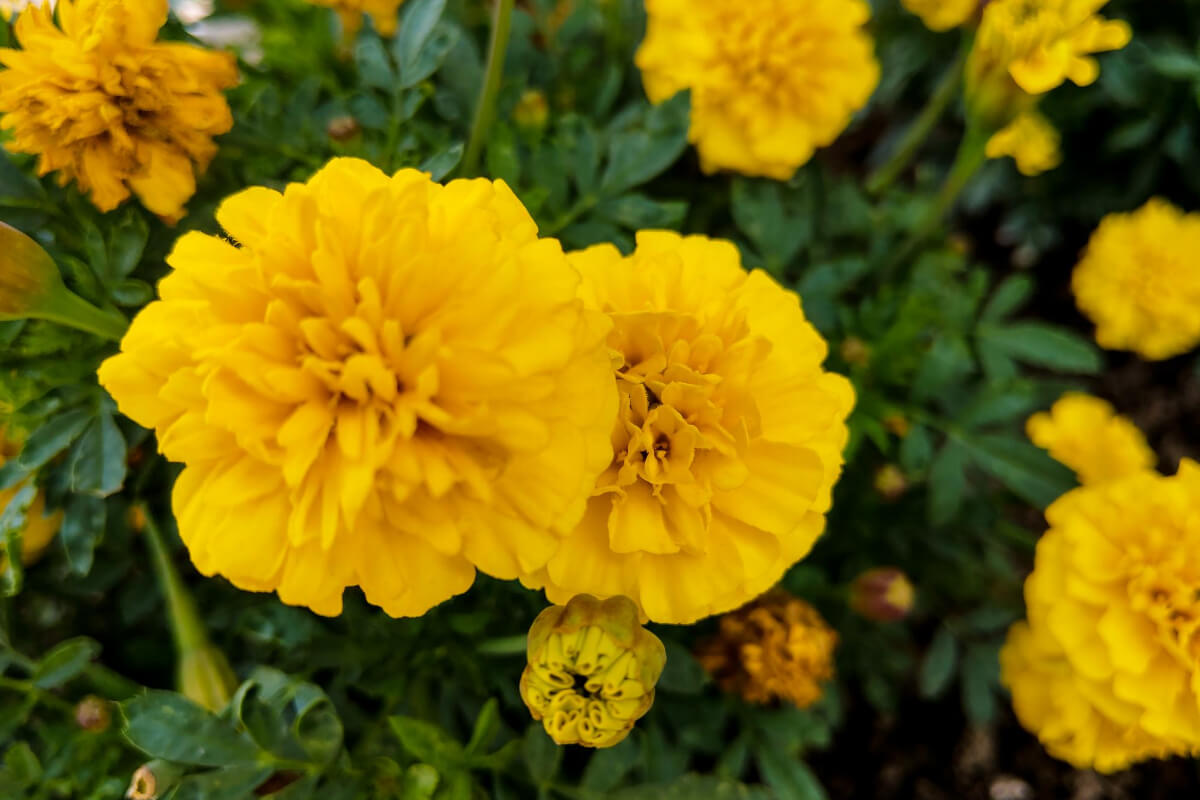
Common marigolds are from the same family as pansies. They should not be confused with similar flowers with the same common name, which are actually from the genus Tagetes.
Common marigold grows wild in many warm temperate regions, but it is uncommon in the United States. It can be easily grown, though, and prefers plenty of sun. It’s a perennial plant, but it is often treated as an annual because it doesn’t survive extreme cold or hot temperatures.
Marigold flowers are not only beautiful, with their bright orange or yellow color, but they’re also edible. You can try them raw in salads, use them for tea, or color dishes instead of saffron. This plant contains many carotenoids and also has cosmetic uses.
- Read more about the Different Edible Wildflowers
12. Kohlrabi (Brassica olearcea var. gongylodes)
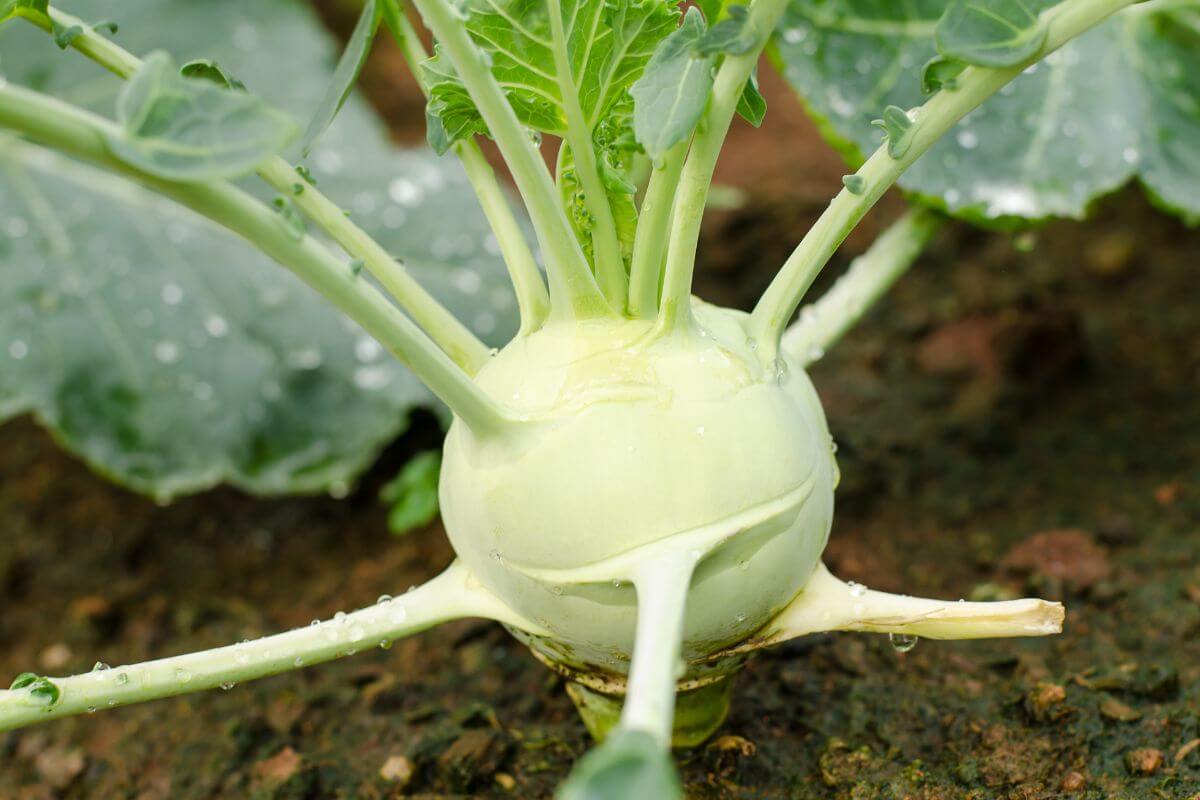
Kohlrabi is a vegetable from the cabbage family that is simple to grow in well-drained soil with plenty of organic matter. It grows best in full sun and prefers cool weather but can handle heat better than most other cabbage family plants.
Plant kohlrabi seeds directly in the ground as soon as the soil is ready for planting. For an earlier harvest, you can start the seeds indoors for 4-6 weeks before transferring them outside when the ground is prepared.
The plant has two edible parts: the purple or green rounded stems and the tender leaves. It tastes similar to turnips but is milder and sweeter.
13. Saffron (Crocus sativus)
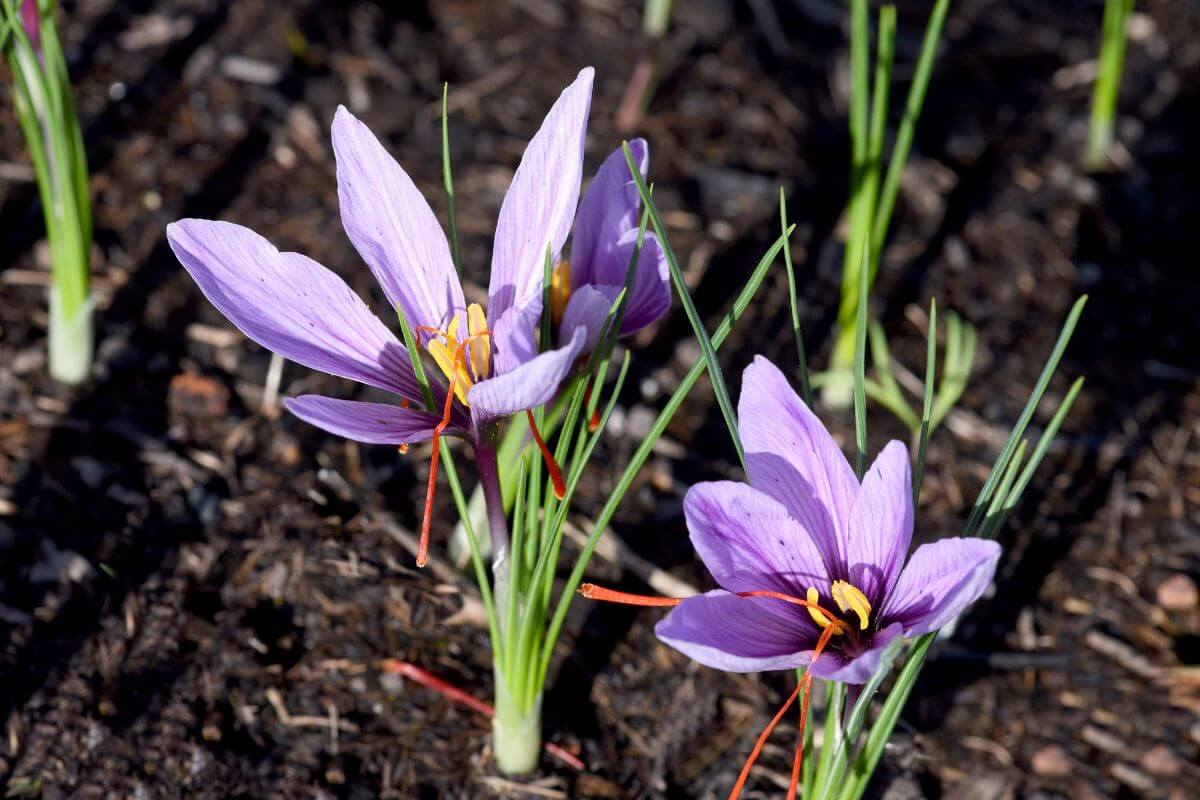
Saffron comes from the stigma of fall-blooming crocus flowers. It’s the dried thread-like part of the flower. You can plant crocus bulbs in the spring and have your autumn saffron harvest year after year without replanting. Saffron crocuses bloom for just one day in November.
Saffron grows best in sandy or loamy soils and needs well-drained soil. It can also grow in poor-quality soil. Harvest the red stigmas when the lavender buds are open. Remember that some crocus species are poisonous, so make sure to order saffron crocus bulbs.
Saffron has a bitter taste and a fragrance similar to iodoform or hay. It is used to make saffron spice, food coloring, and medicine. Saffron contains chemicals that might alter mood, kill cancer cells, decrease swelling, and act like antioxidants.
14. Swiss Chard (Beta vulgaris subsp. cicla var. flavescens)
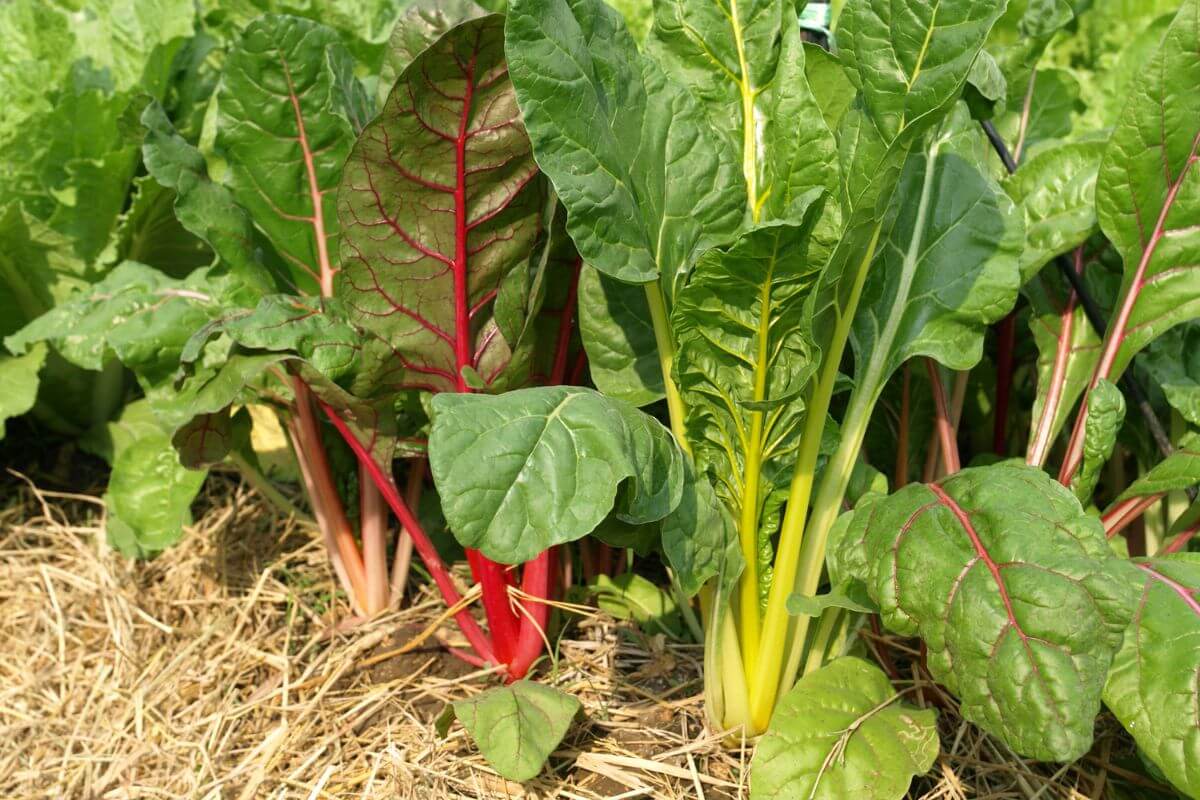
Swiss chard is a great option for your fall garden beds or containers. It’s easy to grow and full of nutrients. You can harvest Swiss Chard as a baby green just a month after planting or wait two months for the plants to mature fully.
This plant has large, deep green leaves and colorful stems in pink, red, gold, orange, or white shades. The leaves have a similar taste to spinach. The Peppermint variety, with its hot pink and white striped stems, can be your go-to chard for autumn color.
15. Potato Onions (Allium cepa var. aggregatum)
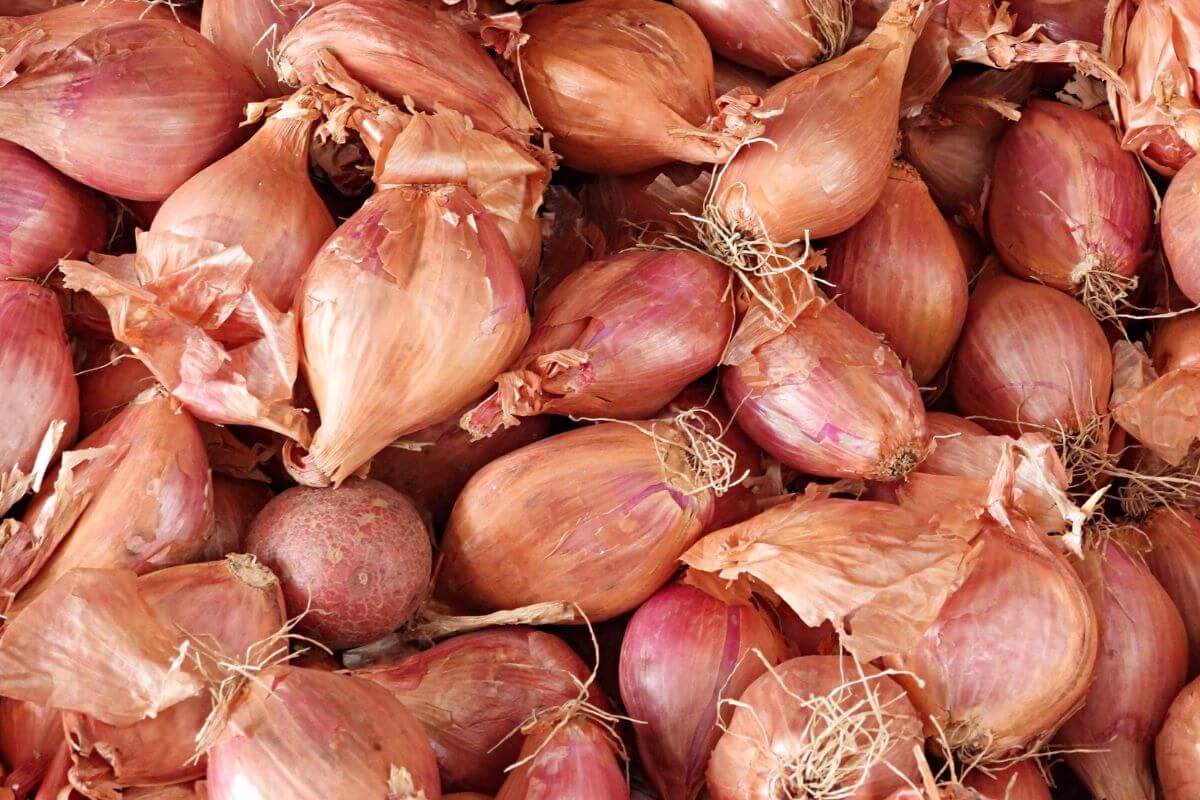
If you struggle with growing bulb onions, consider planting perennial varieties this fall. Many of them are hardier and more disease-resistant than annual bulb onion varieties. Potato onions produce clusters of bulbs underground, similar to how garlic produces cloves.
Potato onions are often grown by replanting the bulbs rather than starting from seed. They can handle various conditions but prefer a slightly acidic to neutral pH. They thrive in well-drained soil rich in organic matter.
You can eat all parts of the plant, including the new leaves, which can be cut like green onions. The bulbs work well in recipes that call for storage-type (not sweet) onions. You can also try adding them to soups or baking them into bread.
16. Sassafras (Sassafras albidum)
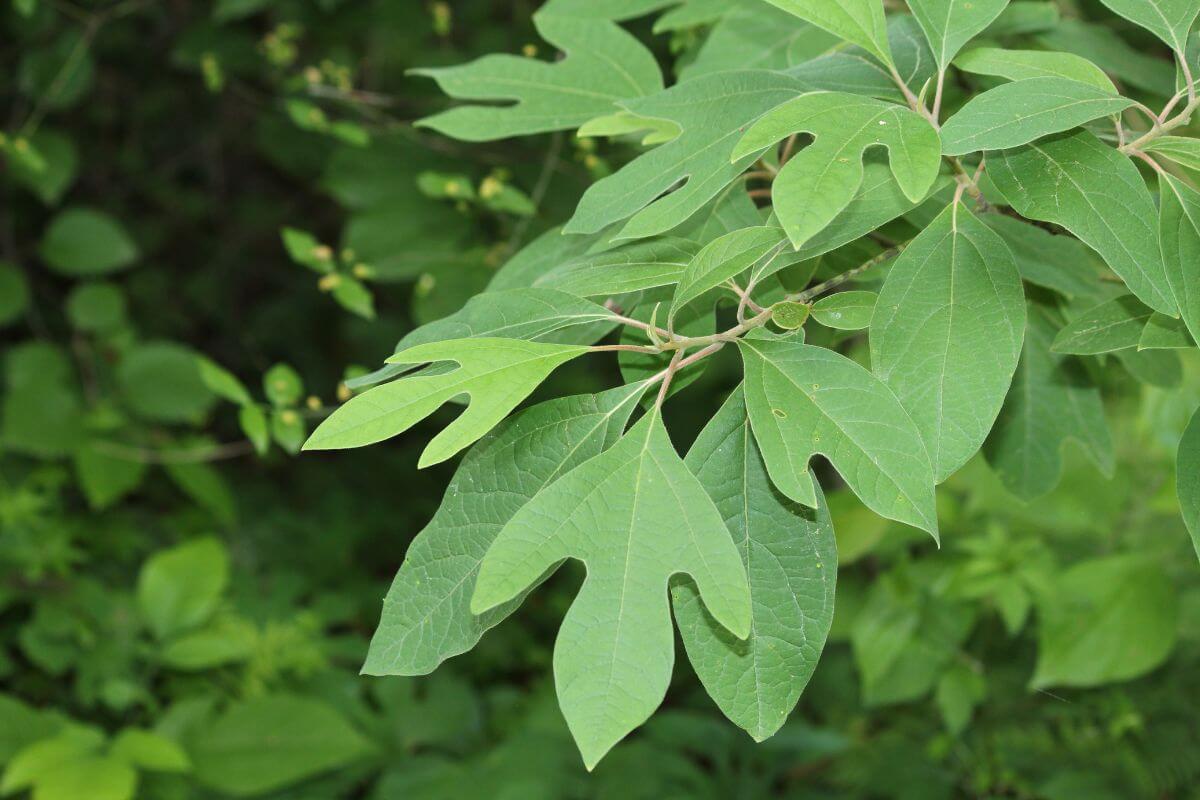
Sassafras trees can be found in the forests and thickets of eastern North America. They typically grow in old fields and at the edges of woods. The leaves are usually oval, but they can also have one deep sinus, which looks like a mitten, or two deep sinuses, resembling a 3-toed dinosaur foot.
To grow sassafras seeds, you can either plant them in containers in the fall and keep them moist until spring, or plant them directly in the ground in the fall. Make sure the soil does not dry out.
If you enjoy root beer, you’ll appreciate the flavorful and complex flavor of sassafras roots. Whether fresh or dried, the roots have a strong root beer flavor and can be used to make a delicious tea by steeping them in hot water. You can also steep the twigs for a tea with a different citrus flavor.
17. Carrots (Daucus carota subsp. sativus)
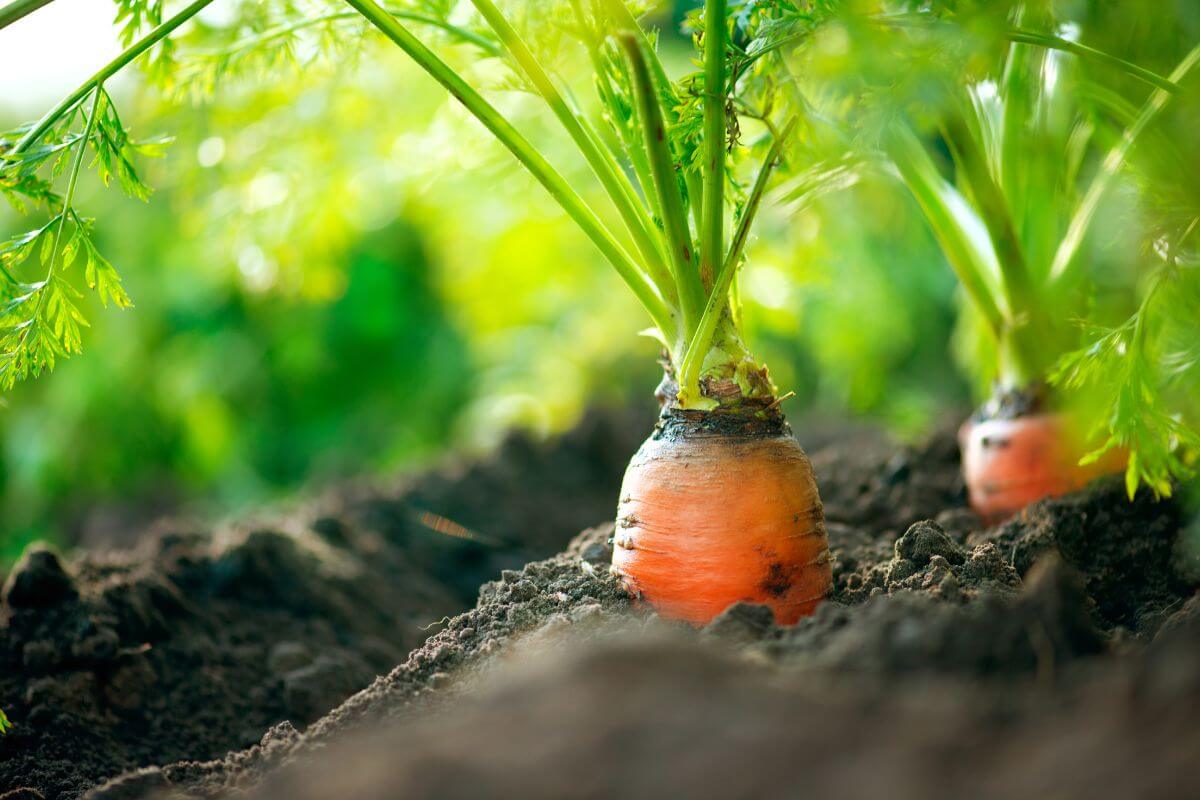
Carrots are a great vegetable for winter harvesting. They keep growing in the cold because they are protected in the ground. Like many root vegetables, the cool weather changes their taste in the fall. Enzymes in the carrots turn starches into sugars.
- Learn more about Winter Plants You Can Eat
Plant fall carrot seeds in midsummer, about 10 to 12 weeks before the first fall frost, depending on the variety. Keep the soil consistently moist until the seeds germinate and grow well.
Late autumn carrots have super sweet roots, so they are often called “candy carrots.” After a few frosts, carrots taste better, so you don’t need to rush to harvest them if there’s a frost in the forecast.
Best Fall Edible Plants Final Thoughts
Growing edible plants in the fall is a great idea because it gives you plenty of time to prepare the soil and plant seeds. This means you won’t have to worry about buying plants and seed packets. You can focus on preparing the ground and planning your garden layout instead.
Spring may be the busiest planting season, but fall is also a wonderful time for your cool-season gardens. Of course, you’ll want to choose varieties that grow quickly and thrive in your climate. The plants listed above can be planted in cooler fall temperatures, allowing you to harvest abundant fresh food in autumn.
Be sure to check out these other articles for more on edible plants:

